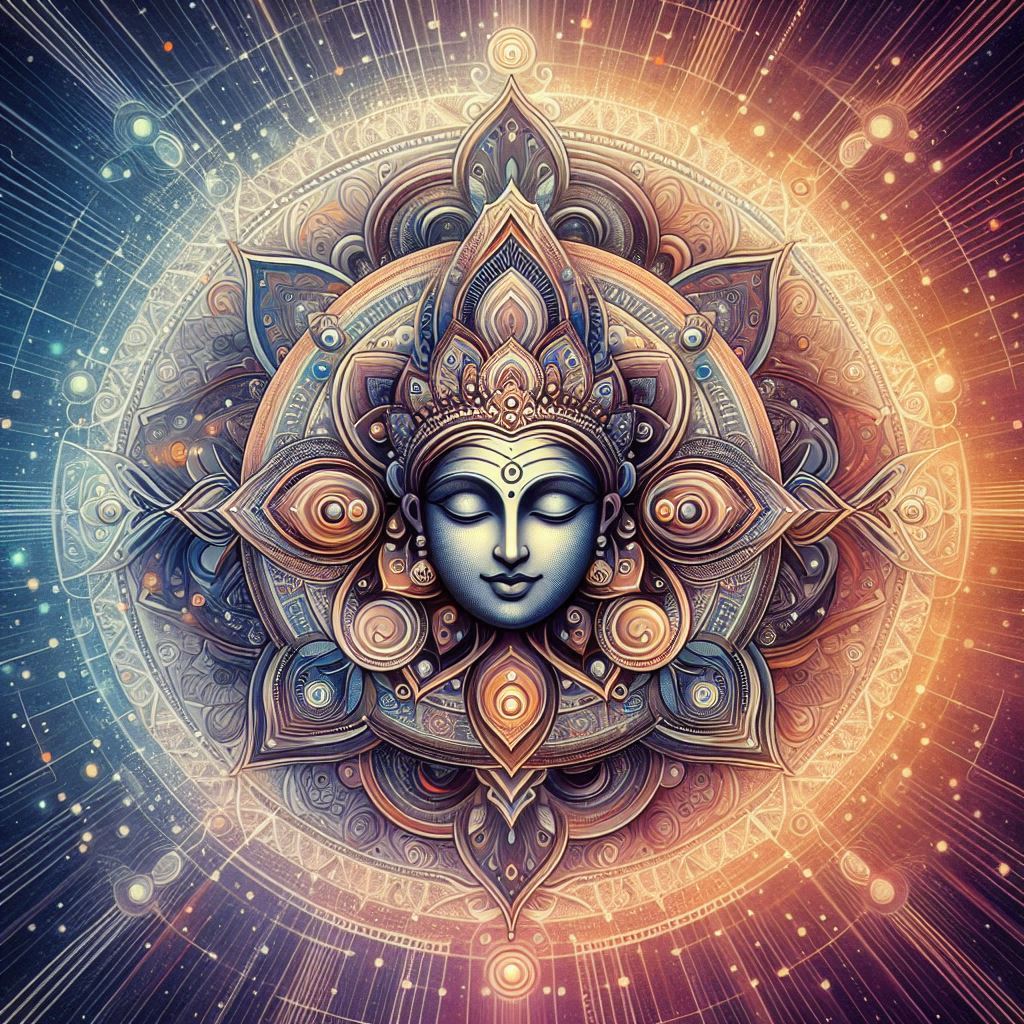
THE ETERNAL TRUTH—
SANATAN DHARMA
Sanatan Dharma, often referred to as Hinduism, is one of the world’s oldest and most profound spiritual traditions. But what exactly is Sanatan Dharma? Is it a religion, a philosophy, or a way of life? In this blog, we’ll explore the essence of Sanatan Dharma—its origins, core principles, and timeless wisdom. Whether you’re new to this tradition or seeking a deeper understanding, this is your guide to the eternal truths of Sanatan Dharma.
What is Sanatan Dharma?
Sanatan Dharma is not just a religion; it is a universal way of life rooted in eternal truths. The term itself holds deep meaning:
Sanatan (सनातन): Eternal, timeless, without beginning or end.
Dharma (धर्म): Righteousness, duty, or the natural order that sustains life.
Unlike many religions that have a single founder or a specific starting point, Sanatan Dharma is considered apauruseya (not of human origin). It is believed to be as old as existence itself, emerging from the cosmic principles that govern the universe.
Sanatan Dharma is not confined to rituals or worship; it encompasses a holistic approach to life, emphasizing harmony with nature, society, and the self. Its teachings are preserved in ancient texts like the Vedas, Upanishads, Bhagavad Gita, and Puranas, which serve as repositories of spiritual and philosophical wisdom.
The Origins of Sanatan Dharma
Sanatan Dharma does not have a single founder or a specific moment of origin. Instead, it is believed to be a revealed wisdom, discovered by ancient sages (rishis) during deep states of meditation.
The Role of the Rishis:
Ancient sages like Vasishta, Vishwamitra, Atri, and Angiras are revered as the custodians of Sanatan Dharma. Through their meditative insights, they received the knowledge of the Vedas, which were passed down orally for generations before being compiled into written form.Timeless and Eternal:
Sanatan Dharma is often described as sanatana (eternal) because its principles are not bound by time, place, or culture. Just as the laws of nature have always existed, the truths of Sanatan Dharma are considered universal and unchanging.
The Meaning of “Sanatan Dharma”
The term Sanatan Dharma emerged organically to describe the eternal and universal nature of this tradition. Let’s break it down:
Sanatan (Eternal): Refers to the timeless nature of its principles.
Dharma (Natural Order): Refers to the cosmic laws that sustain life and the universe.
The name Sanatan Dharma was used in ancient texts like the Mahabharata and Puranas to distinguish this tradition from other belief systems. For example, in the Bhagavad Gita, Lord Krishna speaks of the eternal nature of Dharma, emphasizing its role in maintaining balance and righteousness in the world.
Why is it Called “Hinduism”?
The term Hinduism is a more recent label, introduced by outsiders. The word Hindu originates from the Sanskrit name for the Indus River, Sindhu. Persian and Greek travelers referred to the people living beyond the Indus River as Hindus, and their way of life as Hinduism. Over time, this term became widely used, but practitioners of this tradition have always referred to it as Sanatan Dharma—the eternal way of life.
The Core Principles of Sanatan Dharma
At the heart of Sanatan Dharma are four fundamental principles that define its philosophy:
Dharma (Righteousness):
Dharma refers to the ethical and moral duties that sustain life and maintain harmony in the universe. It is the foundation of a righteous life.Karma (Action & Consequences):
Karma is the law of cause and effect. It teaches that every action, thought, and intention has consequences, shaping one’s present and future.Moksha (Liberation):
Moksha is the ultimate goal of life—liberation from the cycle of birth and death. It is the realization of one’s true nature as an eternal soul.Vasudhaiva Kutumbakam (The World is One Family):
This principle emphasizes the interconnectedness of all life. It fosters compassion, inclusivity, and a sense of global unity.
The Sacred Texts of Sanatan Dharma
Sanatan Dharma is guided by a vast body of sacred texts, each offering unique insights into the nature of reality, the self, and the universe. Some of the most important texts include:
The Vedas: The oldest and most authoritative scriptures, containing hymns, rituals, and philosophical teachings.
The Upanishads: Philosophical texts that explore the nature of the self (Atman) and the ultimate reality (Brahman).
The Bhagavad Gita: A spiritual dialogue between Lord Krishna and Arjuna, addressing duty, righteousness, and the path to liberation.
The Puranas: Mythological texts that narrate the stories of gods, goddesses, and ancient sages.
Common Misconceptions About Sanatan Dharma
There are many misconceptions about Sanatan Dharma. Let’s clarify a few:
Myth: Sanatan Dharma is just about rituals and temple worship.
Truth: It is a comprehensive way of life that includes philosophy, ethics, and spirituality.Myth: You need to be Hindu to follow Sanatan Dharma.
Truth: Sanatan Dharma is universal and welcomes all seekers of truth, regardless of their background.Myth: Karma means punishment for past mistakes.
Truth: Karma is not about punishment; it’s about learning, growth, and the natural consequences of actions.
Conclusion: The Essence of Sanatan Dharma
Sanatan Dharma is more than a religion; it is a timeless and universal way of life. Rooted in eternal truths, it offers profound insights into the nature of existence, the self, and the universe. Whether through its sacred texts, core principles, or philosophical teachings, Sanatan Dharma continues to inspire and guide millions of people around the world.
By understanding its essence, we gain a deeper appreciation for one of humanity’s oldest and most enduring spiritual traditions.
Glossary:
Sanatan Dharma: The eternal way of life.
Dharma: Righteousness and duty.
Karma: Action and its consequences.
Moksha: Liberation from the cycle of birth and death.
Vasudhaiva Kutumbakam: The world is one family.
Vedas: Ancient scriptures of Sanatan Dharma.
Upanishads: Philosophical texts exploring the nature of reality.
Bhagavad Gita: A spiritual dialogue on duty and liberation.
source: this content was created with the assistance of AI and has been adapted and curated by Jignesh Gandhi for this blog.